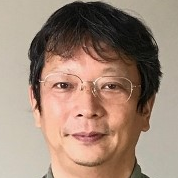High-speed Optical 3D Shape and Deformation Measurement
A special issue of Applied Sciences (ISSN 2076-3417). This special issue belongs to the section "Optics and Lasers".
Deadline for manuscript submissions: closed (15 June 2019) | Viewed by 45480
Special Issue Editors
Interests: optical methods in experimental mechanics; structural health monitoring; 3D shape measurement; displacement and strain distribution measurement; fringe projection method; moire method; digital holography; real-time measurement
Special Issues, Collections and Topics in MDPI journals
Interests: three-dimensional (3D) optical sensing; optical information processing; 3D shape measuring technology for dynamic process (objects) whose shape is varying with time
Special Issues, Collections and Topics in MDPI journals
Special Issue Information
Dear Colleagues,
This special issue focuses on high-speed optical 3D shape and deformation measurement techniques. These techniques are required for many fields of engineering such as an inspection of industrial products, a nondestructive inspection, an experimental mechanics, medical engineering, a space engineering, and so on. Recently, high-speed and real-time 3D shape and deformation measurement techniques using a fringe projection method, laser interferometry, a stereo vision and the other interesting optical methods are developed by many researchers. Unique hardware and software are also designed to realize the high-speed and real-time measurement. General-purpose computing on graphics processing units (GPGPU) is a powerful device for fast analysis.
We would like to invite you to submit original research papers for the related topics. Novel applications of high-speed and real-time 3D shape and deformation measurement are also welcome.
Prof. Dr. Motoharu Fujigaki
Dr. Shien Ri
Prof. Dr. Qican Zhang
Guest Editors
Manuscript Submission Information
Manuscripts should be submitted online at www.mdpi.com by registering and logging in to this website. Once you are registered, click here to go to the submission form. Manuscripts can be submitted until the deadline. All submissions that pass pre-check are peer-reviewed. Accepted papers will be published continuously in the journal (as soon as accepted) and will be listed together on the special issue website. Research articles, review articles as well as short communications are invited. For planned papers, a title and short abstract (about 100 words) can be sent to the Editorial Office for announcement on this website.
Submitted manuscripts should not have been published previously, nor be under consideration for publication elsewhere (except conference proceedings papers). All manuscripts are thoroughly refereed through a single-blind peer-review process. A guide for authors and other relevant information for submission of manuscripts is available on the Instructions for Authors page. Applied Sciences is an international peer-reviewed open access semimonthly journal published by MDPI.
Please visit the Instructions for Authors page before submitting a manuscript. The Article Processing Charge (APC) for publication in this open access journal is 2400 CHF (Swiss Francs). Submitted papers should be well formatted and use good English. Authors may use MDPI's English editing service prior to publication or during author revisions.
Keywords
- 3D shape and deformation measurement
- High-speed
- Real-time
- Fringe projection method
- Laser interferometry
- Stereo vision
- Phase-analysis method
- Novel applications of 3D shape and deformation measurement
- Experimental mechanics
- Nondestructive inspection
- GPGPU







